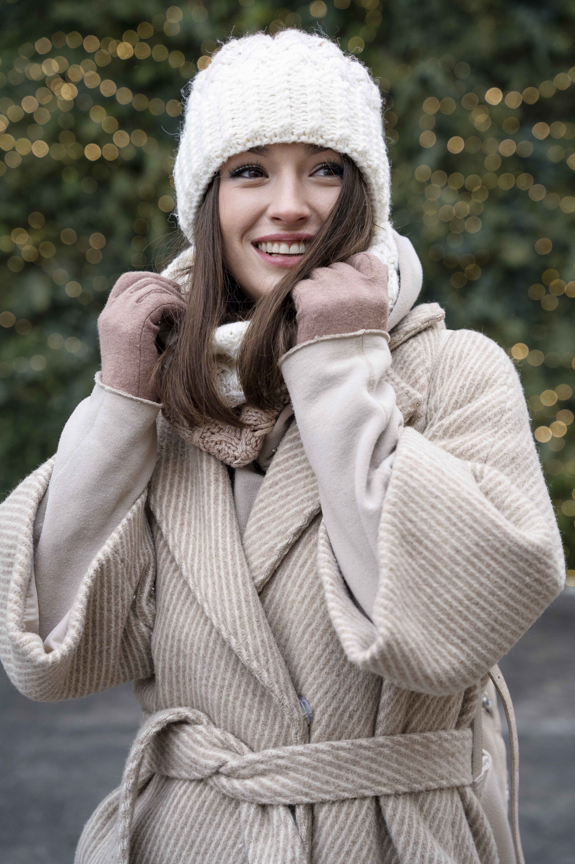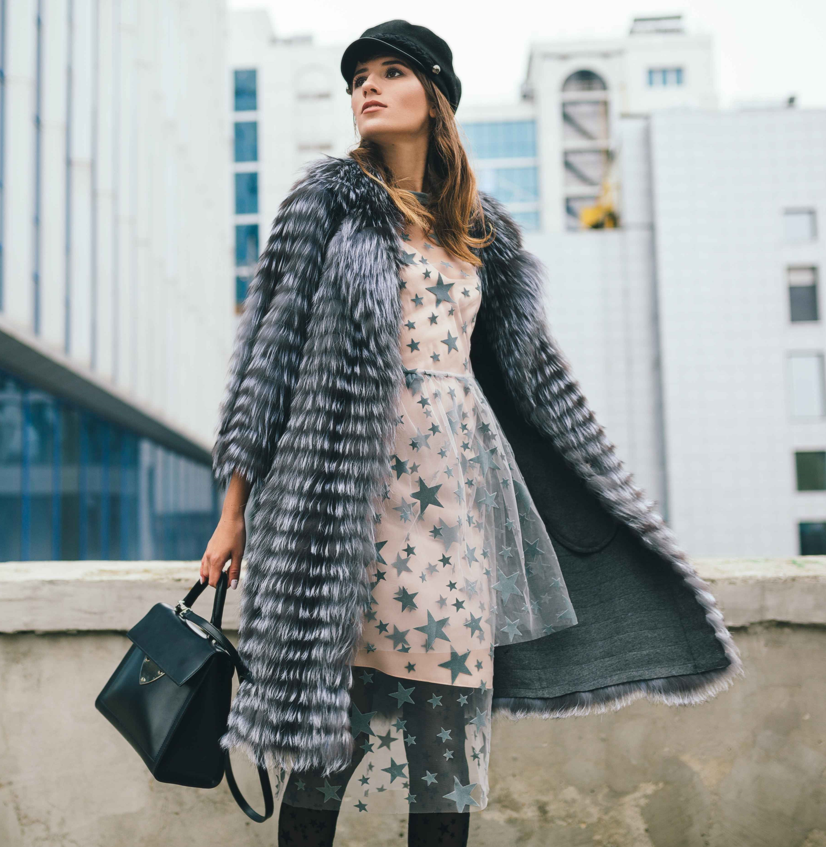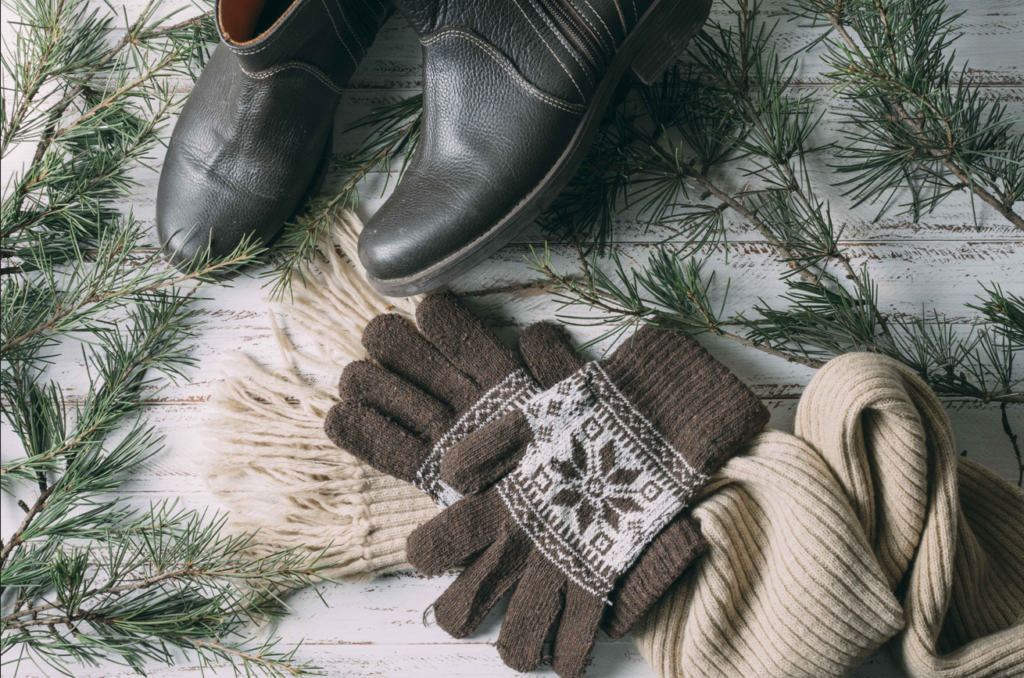The season for drinking hot cocoa by a fireplace and having night movies underneath a warm blanket is officially here! Even though it can be daunting to go out in the cold for work, errands, or simply a nice walk because of the cold, it shouldn’t be that way. I know a lot of people dread winter because they don’t want to wear a lot of clothes and look bulky. But there is a way to combat the cold while still being stylish and cute. Mastering the art of layering will make dressing up more fun and keep you warm and fashionable. In this post, I will share with you the principles of layering as well as tips and tricks to adapt it to your body shape and creative ways to layer your outfit.
Simple Formula for Top Layering and Bottom Layering
The formula for layering is very simple: base layer + mid layer + outer layer. Depending on the weather and your sensitivity to cold, you can add more layers without looking bulky or boxy. The goal is to make a vertical line to create an elongated silhouette.
Base layer: Your base layer should be form-fitting and thermoregulating to keep you warm and comfy. For the top, items such as long-sleeved tops, compression shirts, and thermal shirts are excellent to keep you warm. For bottoms, items such as leggings, thermal leggings, and tights are the best to keep your legs snug. Some new fleece-layered tights and leggings are warm and look like regular sheer tights. The best part? You can wear all your favorite skirt or dress on top of it.
Mid-layer: This layer should be thicker than the previous one but not restrictive. It is the insulating layer that traps warmth and keeps warm air close to your body. Mid-layers, such as sweaters, pullovers, and cardigans, are crucial for trapping warmth. If you’re going to ski you can add a bottom mid-layer, but it’s not necessary for everyday life… Unless you are like me and get cold easily.
Outer layer: It is the heaviest piece that protects you from the cold, but also a statement piece that complements the other layers. The outer layer should be loose enough for movement. Parkas, puffer jackets, and raincoats are all great outer layer options for the winter wardrobe. It is important to invest in a quality winter coat or jacket that not only complements your outfit but also provides ample protection against wind, rain, and snow.
Fundamentals of Layering
1. Textures

Textures are an excellent way to make your layered outfit look stylish and visually appealing. It’s best to use different textures and fabrics to avoid looking heavy or unstylish. Add contrast or surprise by mixing smooth with coarse to add depth, light-based fabrics with heavy-based fabrics to create balance, matte with shine to make it visually appealing, light with dark to add contrast… Mix a chunky knit with chiffons, crêpes, or silks. Don’t be afraid to experiment and have fun with it! Pro tip sheer materials are a great way to minimize or conceal without adding volume and add a delicate touch to your outfit. Incorporating different textures creates an eye-catching and dynamic outfit. Winter can be depressing so having fun with your outfit can uplift your mood and add more excitement.
2. Proportions

Layering allows you to show your creative side and create an element of surprise for your outfit. Playing around with proportion is a great way to show your personality and have fun. Mixing oversized and fitted garments adds dimension to your outfit. Pairing a bulky sweater with slim-fitting bottoms or a short, boxier sweater over a shirt creates a contrast that can be chic and comfortable. Balance and proportion are crucial elements to keep in mind when layering. To achieve a slim silhouette and avoid bulkiness think of your body as a triangle or an inverted triangle — Narrow upper body + Wide lower body or vice versa. Be creative with it and separate yourself from the crowds by having a stylish look.
3. Lengths

Lengths are also important when layering; if you don’t pay attention to length, you can easily end up with a bulky silhouette. Combine shorter and longer layers to achieve a well-balanced and proportionate outfit. Playing with lengths can elongate your figure as well as create a dynamic and aesthetically pleasing look. For example, pairing a shorter jacket with high-waisted pants can elongate the legs and create a balanced silhouette. Long vests and leaving your shirt tails hanging out are a great way to layer.
4. Colors

While layering allows for creativity, maintaining a cohesive color palette can enhance the overall aesthetic of your winter outfit. Experiment with complementary colors or go for a monochromatic look to achieve a polished and put-together appearance. For a classic look, it’s always best to work with two complementary colors. If you opt for the monochromatic look, you can get creative with accessories that will complement your outfit. Pro tip: The best way to create a slim and elongated silhouette is to wear one color from head to toe or tone-on-tone colors. If you’re aiming for a slim silhouette, light-colored tops paired with dark-colored bottoms will make you appear thinner.
5. Winterize your clothes

Cooler temperatures don’t necessarily mean you can’t wear your favorite summer tops or dresses. Transforming your summer and spring clothes into winter-appropriate outfits is a great way to maximize your wardrobe and stay stylish in colder temperatures. The possibilities are limitless; you can pair a strap dress with a chunky turtleneck, throw a warm sweater over a maxi dress, or wear a turtleneck under a camisole or sleeveless top for a chic and cozy ensemble. Having a transitional wardrobe can help you navigate the changing weather conditions smoothly while maintaining comfort and style as the seasons shift.
6. Accessories

Don’t forget about accessories! Accessorizing while layering can elevate your outfit, adding personality and style to your look. The goal is to continue creating a vertical line, and the right accessories can make a significant difference. If you plan on wearing many layers that add bulk, you should definitely use accessories to balance out your outfit.
Scarves: Loop an infinity scarf around your neck for a cozy and stylish addition to your layered look. Be adventurous and experiment with different ways to knot or wrap your scarf for varied textures. Pro tip: have one end longer than the other to avoid widening your body.
Hats and Beanies: Pair a wide-brimmed hat with your layered outfit for a touch of sophistication. For a more casual and laid-back look, choose a beanie in a contrasting color. If you’re aiming for a chic and trendy touch to your layers a Fedora hat—chef’s kiss!
Necklaces: Wear a long-strand necklace to elongate your silhouette. Pair multiple necklaces of varying lengths for a trendy and bohemian vibe.
Belts: Wearing a belt gives the illusion of shape. Define your waist by adding a belt over your outermost layer. This will create a polished and structured silhouette. You can also opt for a belt with a unique or statement buckle to add a focal point to your outfit.
Handbags: Choose a structured handbag to add a refined element to your layers. If you’re wearing a shoulder bag, avoid letting it hang on your hip because it adds extra bulk. Prioritize bags with short straps.
Key takeaways
Remember, the key to successful accessorizing while layering is finding a balance. Be mindful not to overwhelm your outfit with too many accessories; instead, choose a few key pieces that complement and enhance your overall look. Whether you’re going for a casual or more polished look, accessories play a crucial role in expressing your personal style and making your layered outfits unique.
How to select the best fabrics for each layer to stay warm
When layering, it’s important to be mindful of the fabric, weight, and thickness of each layer. Choose thinner and breathable fabrics for your base layer and gradually increase the thickness for the other two layers. By doing this, you can easily adjust by removing or adding layers depending on how you’re feeling.
Base Layer Fabrics: When selecting fabrics for the base layer, choose lightweight and breathable fabrics. Merino wool is great as a base layer because it has temperature-regulating properties and wicks moisture away from the body. Polyester is also good because it is lightweight and provides a comfortable as well as a non-restrictive feel while retaining warmth. These fabrics keep your body warm, dry, and comfy. For the base layer, always choose a fabric that closely fits but that is not too tight to avoid chafing and irritation.
Mid-Layer Fabrics: When choosing clothes for mid-layers, go for fabrics that will bring you warmth and insulation. Fleece is a popular mid-layer material because it has excellent insulation properties and provides warmth as well as softness. Down is known for its exceptional warmth-to-weight ratio and provides excellent insulation while remaining lightweight and compressible. If you are looking for a more affordable option, synthetic insulation such as PrimaLoft or Thinsulate are great alternatives. They mimic the properties of down but retain warmth even when wet.
Outer Layer Fabrics: For outer layers, pick fabrics that are waterproof and windproof to protect you from rain, wind, or snow. Fabrics such as Polartec NeoShell, Gore-Tex, Pertex Shield, and other high-performance synthetic fabrics are all great choices. These fabrics are made to battle severe weather conditions.
How to use layering to flatter your body shape
Hourglass: For hourglass figures, emphasize your well-defined waist by choosing fitted base layers that highlight your curves. Opt for jackets that are tailored and structured to enhance your hourglass silhouette. You can also accessorize your outfit with a belt over a cardigan to create definition.
Apple: If you have an apple-shaped body, try to create a vertical line by wearing V-neck tops and opt for flowy tops to draw attention away from the midsection. Open cardigans are a great way to elongate your bust. You can also draw attention upward with a statement necklace or a nice scarf.
Pear: If you have this type of body shape, it’s important to focus on balance and proportions. Wear darker colors on the bottom to create a slimming effect and layer a flowy blouse with statement jewelry to bring attention to your upper body. You can also choose jackets that hit at the waist to balance out wider hips.
Rectangle: For rectangle figures, choosing tops that tighten at the waist to create more curves is important. You can also try experimenting with layered tops to add more dimension to your upper part and using textured fabrics to add more shape to your figure. Combining voluminous pieces such as a bulky sweater with a skirt to create a curvy silhouette.
By following these tips and understanding how layering can impact your body shape, you can create outfits that not only flatter your figure but also help you feel confident and stylish.

